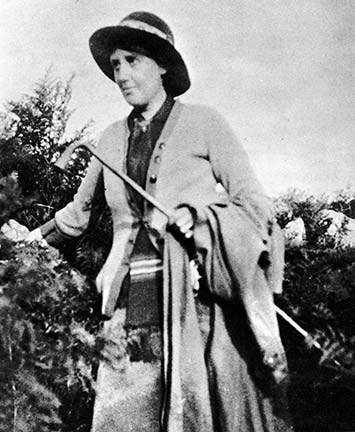You have no items in your cart. Want to get some nice things?
Go shopping
A footprint is a trace, a mark we leave behind of the paths we take. Footprints of London is an organisation that seeks to keep alive this sense of paths trodden many times, reminding us that even in the commotion and business of contemporary London we are continuously being steeped in history, treading the same steps as the living and fictional figures who have come before us. A walk can revive both literal and fictional histories and it’s exciting to be reminded about how history and literature often interact with our everyday lives, even if we may not realise it. “I love walking in London,” says Mrs. Dalloway. “It really is better than walking in the country.” It’s a testimony that Footprints would certainly agree with and one that made this intriguing talk a delight to attend.
The event features as a part of Footprints’ literary festival, entitled Virginia Woolf: Her Life, Her Loves, Her Works. This, roughly, is the format the evening follows. We meet in the secluded but splendid setting of St. Olave Church Hart Street— Virginia Woolf’s favourite in London—and listen to three talks, one on her “life” by the charming Stephen Benton, one on her “loves” by the enigmatic Jenni Bowley and another on her ‘works’ by the excellent Rob Smith. It might be said the speakers understandably got stronger as the event went on, and with time the momentum of the talk increased, the atmosphere relaxed as did the stutters of the speakers. All three would clearly have been more comfortable out “on the go” than stuck inside, but I think I was not the only member of the audience grateful for the sanctuary from the rain.
Benton began the evening by charting Woolf’s own progression in London, exploring her various haunts: Kensington, Richmond, Bloomsbury, Hogarth House. Unlike the shock opening of the National Portrait Gallery exhibition – which involves a photo of Woolf’s decapitated house in Tavistock Square – Benton instead features the photo fitted neatly into its correct chronological order. The contrast makes the sudden destruction stand out all the more, the image a vivid depiction of how the war ripped apart the life Woolf was forging for herself. Benton alerts us to the remarkable upshot of this dislocation. Had Woolf not kept moving around, her diaries would not have survived: they were extracted from the damage of a burst pipe in one of the houses she and Leonard were leasing at the time.
One of the most entertaining elements was Jenni Bowley’s talk, in which she dwelt upon Woolf’s trait for animalising her friends when talking about them in her letters. Her young lover Violet Dickenson becomes a “Kangaroo” to Woolf’s “Wallaby”, the loving relationship of the statuesque Violet and the comparatively petite Woolf reduced to that of a mother kangaroo with her inviting “pouch”. Hermione Lee in her biography of Woolf summarises their relationship as one of excessive and at times inappropriate “petting”. Later loves would be dubbed a “sheepdog” to Woolf’s “mole” or “squirrel”, and one older woman with whom she began a long correspondence was initially dubbed a “castrated cat”, with Woolf likening the experience of her acquaintance to the sensation of being caught by a giant crab!
Rob Smith, the final speaker, takes us on another “virtual walk” within the confines of the medieval church. However, unlike Benton’s comprehensive walk through Woolf’s own life, his takes us around London as a character within Mrs. Dalloway, a novel that weaves itself in and out of the same streets that Woolf herself walked. We are taken down narrow roads, past Buckingham Palace and two parks to the ancient Bond Street, Smith noting amusingly on the way that modern developments have upset Mrs Dalloway‘s picturesque world. It feels like a case of literary detective work. The site of Woolf’s fictional flower seller Miss Pym, declares Smith, was a shop now called “Coach”; in 1925, this was the only flower shop on Bond Street. Woolf’s praise of Bond Street causes a chuckle: in an indication of the sheer amount of upheaval since Woolf’s day, the author praised the street’s austerity, an unassuming thoroughfare wit “no splash, no glitter”. However, the joy Woolf finds in the “flags flying” from the shops is still as alive; what’s made evident by Smith’s investigations is how, despite the change, London stoically retains traces of the days of Woolf’s writing.
What all the speakers open up is the idea that any journey across London, however small, can be an adventure—and they urge us to explore. As I head out into the rainy chill of the evening to return home, I find myself looking up through the sheets of rain at the gold glow of the many lampposts, the colossal archways of buildings—both old and new—my eyes somehow freshly open. Walking in London truly is an exciting and—with the right guide—enlightening experience, and there are surely many more footprints left to trace.
For upcoming walks, including literary ones, visit the Footprints of London website.

About Thea Hawlin
Theodora (Thea) Hawlin is assistant editor and production manager of The London Magazine.




